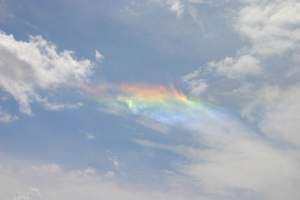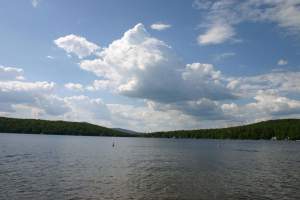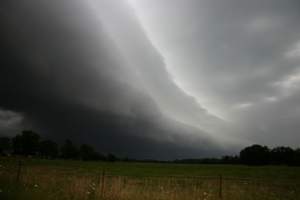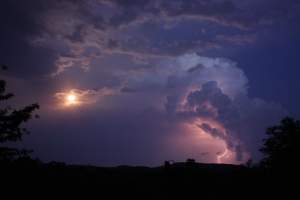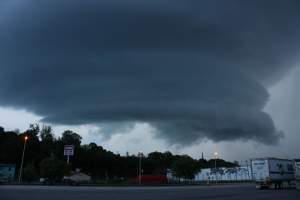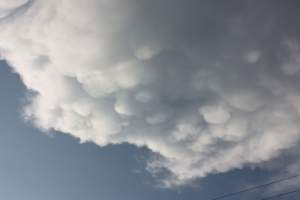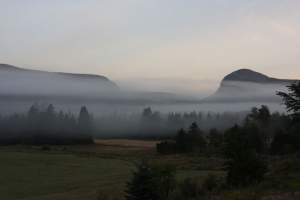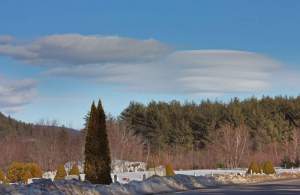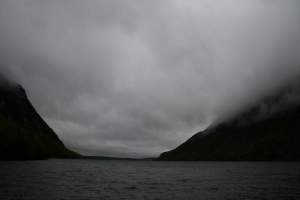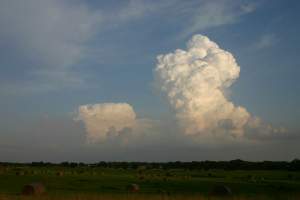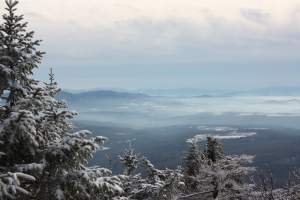
Take our cloud quiz!
I grew up near the water in Brunswick, Maine, where warm mornings are often shrouded in a thick deck of clouds. On the coastal plain, moist south winds cool as they pass over the chilly waters of the Gulf of Maine, causing blankets of fog. It can be mid-morning before the sun breaks free and puffy fair-weather clouds dot the azure sky.
Brunswick, with its distinctive seasons and smog-prone summers, was a good place to be if you were a kid interested in clouds. The sky had personality. I can clearly remember in 1996, when I was 16 years old, a freak late-spring thunderstorm that towered to the unusual height of 60,000 feet. It bore the classic flattened anvil at its summit, and looked eerily similar to the mushroom cloud of a nuclear explosion.
As the storm neared, the sky began to blacken, and the thunder grew louder. I ran inside and ransacked my room for my 35-mm camera. When I returned, the sky was blacker than I had ever seen it; it was as if someone had unfurled a giant sheet of carbon paper over the sky. Vivid bolts of lightning appeared on the horizon, some of them flickering for close to two seconds.
Elated, I held the camera to my eye and shot the cumulonimbus clouds and the lighting, then afterwards the giant bulbous pouches – called mammatus clouds – that protruded from the underside of the storm’s anvil cloud cap.
It was my first successful shoot of a severe thunderstorm. Or so I thought. A week after the event, my mother returned from the drugstore to tell me that none of the photographs had come out. Apparently, in my haste to dash into the storm and capture the action, I had not loaded the film correctly.
Years later, I went on to become a meteorologist and, perhaps to make up for my failed first attempt, I still carry a camera wherever I go, ready to capture the drama of the skies. Despite years of observing clouds, I never tire of their shapes and their stories. Collected here are a few of my cloud images from over the years, with descriptions of what they signal about the atmosphere. I hope they will pique your interest in clouds and inspire you to head out into the field to watch them in their natural splendor.
Join the Community of Observers
Meteorologist Chris Bouchard and a team of naturalists and educators from the Fairbanks Museum and Planetarium in St. Johnsbury, Vermont, are seeking your help in establishing a database that tracks clouds and weather patterns, migratory birds, butterflies, and wildflowers. The project is called The Community of Observers program, and the idea is to enlist the help of citizen scientists to track how the landscape is changing, from season to season and, in this era of climate change, over longer periods of time. The group’s aim is to provide a forum for observations – anecdotal as well as quantitative.
The museum’s meteorologists have recently digitized weather records dating back to 1894. These records represent the longest continuous weather data stream at a single site in Vermont, and the trends they reveal offer clues to the nature of change in the region. Weather observers who participate in the Community of Observers program will build similar data sets, and contribute directly to ongoing studies of the weather trends affecting our region. The museum will also be tracking the migratory patterns of 15 bird species, the populations of 12 butterflies, and the bloom dates of 25 wildflowers. In each case, the species are easy to identify, so that people at all levels of experience can contribute.
A new website will map observations and provide access to collected data, including the museum’s records of first bloom dates, which reach back to 1904.
Learn more about how you can become a Fairbanks Observer at www.fairbanksmuseum.org, or call Leila Nordmann, Program Director at the Fairbanks Museum and Planetarium at (802) 748-2372.
The mapping tool on the website is limited to Vermont and northern New Hampshire, but there are several other sites for those interested in collecting data outside this region, such as the National Phenology Network, eBird, through the Cornell Lab of Ornithology, the North American Butterfly Association, and The Appalachian Mountain Club.


